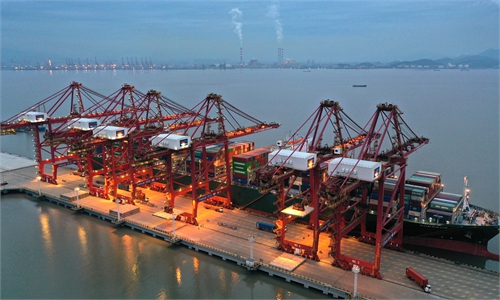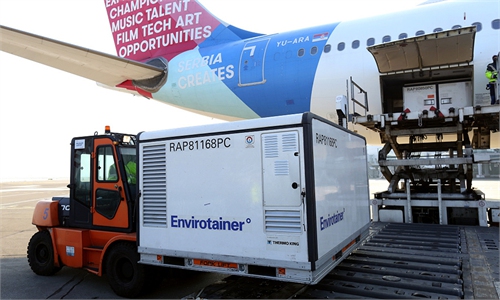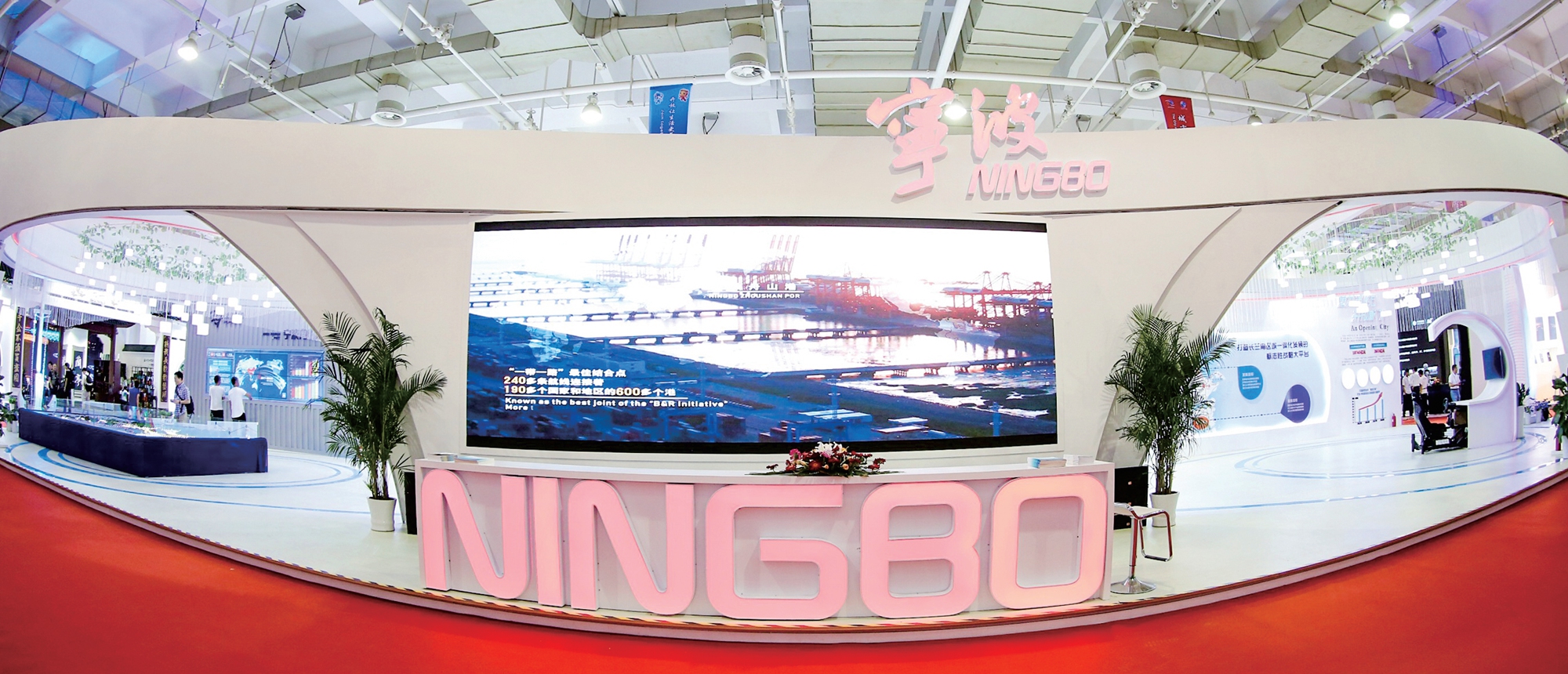
The Belt and Road Exhibition Area - Ningbo Pavilion in Ningbo, East China's Zhejiang Province Photo: Courtesy of the publicity department of Ningbo
Anticipation is building up among merchants and companies eyeing broader and deeper cooperation with Central and Eastern European Countries (CEECs) in Ningbo, East China's Zhejiang Province ahead of the second China-CEEC Expo & International Consumer Goods Fair.
The event, co-organized by the Chinese Ministry of Commerce (MOFCOM) and Zhejiang provincial government, is designed to explore opportunities and boost trade in consumer goods and services with Central and Eastern European nations.
Exporters and importers from both China and CEECs in fields ranging from agriculture and machinery to equipment and auto manufacturing have shown expectations to deepen their cooperation in respective fields via the event. 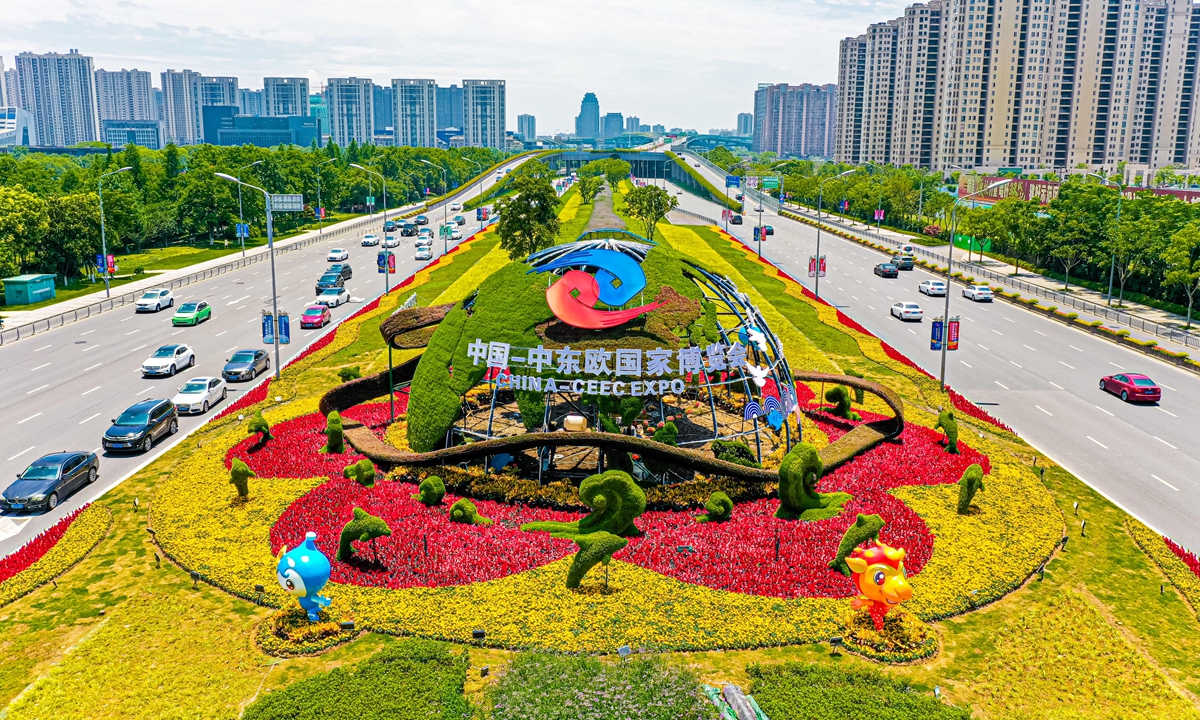
A site with the China-CEEC Expo sign in Ningbo Photo: Courtesy of the publicity department of Ningbo
The expo is scheduled to kick off on Tuesday and last till Friday. The total floor area of the exhibition is 200,000 square meters. More than 2,000 exhibitors and 6,000 buyers are expected to participate in the event.
The expo's trade shows are grouped under three categories - the CEEC exhibition, the international consumer goods exhibition and the permanent exhibition of imported commodities.
Even before the event started, Czech aircraft maker Magnus has signed up a cooperation agreement with the CEEC Industrial Cooperation Park in Zhejiang Province to make foray into the Chinese market.
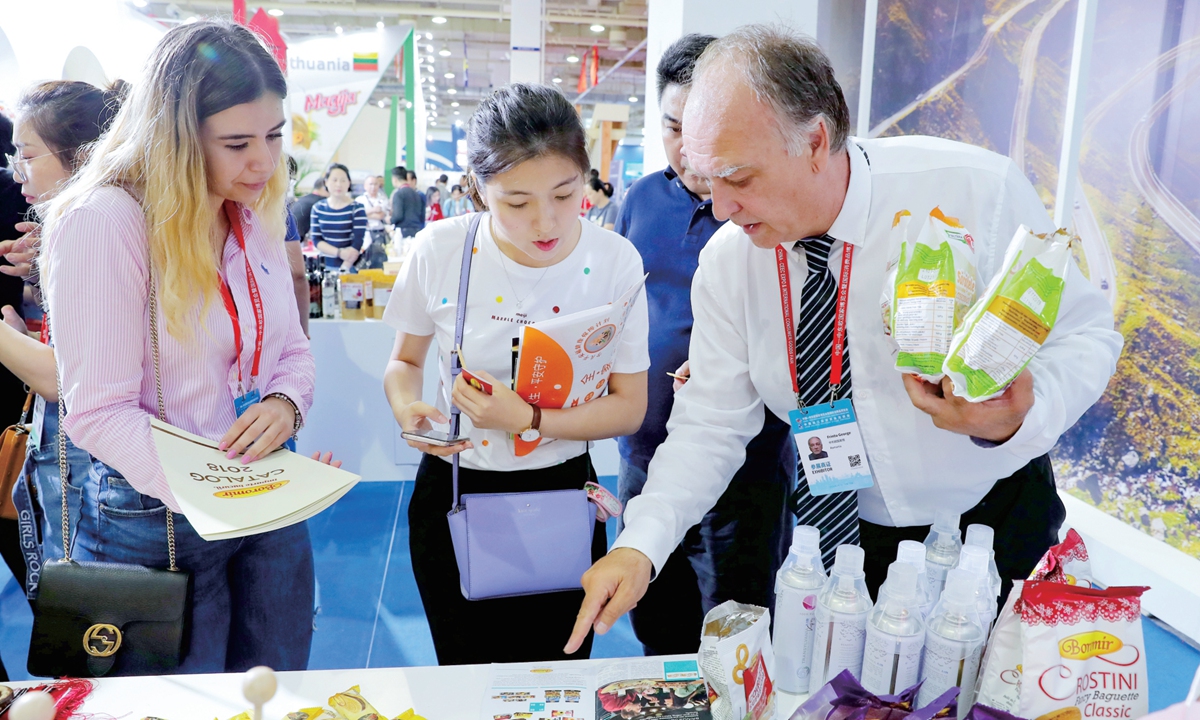
Participants at Hall 5 of the first China-CEEC Expo in 2019 Photo: Courtesy of the publicity department of Ningbo
Cui Hongjian, director of the Department of European Studies from the China Institute of International Studies, told the Global Times on Thursday that the event is expected to deepen cooperation between China and CEECs across traditional fields.
"Agricultural sector is one of the areas where we could expect cooperation to make a breakthrough, as there is a growing demand by CEECs to export their agricultural produce," Cui said.
In addition, cooperation within the green and digital economies will also be a highlight, Cui said, noting that more digital economy projects are expected to be launched as CEEC enterprises find new channels for expanding the Chinese market after the online China-CEEC Expo in Ningbo in 2020.
Wang Wenjia, a manager with Zhejiang Defei Supply Chain Management Co, said the company has wired over 10 million yuan ($1.56 million) in advance payment to Polish dairy firm MLEKPOL to secure milk shipments.
Since the two inked cooperation deals in 2019, the imports have grown to 220,000 tons a year, with Wang's company now accounting for over 40 percent of MLEKPOL's output.
"I believe the imports volume will increase greatly in 2021," Wang said.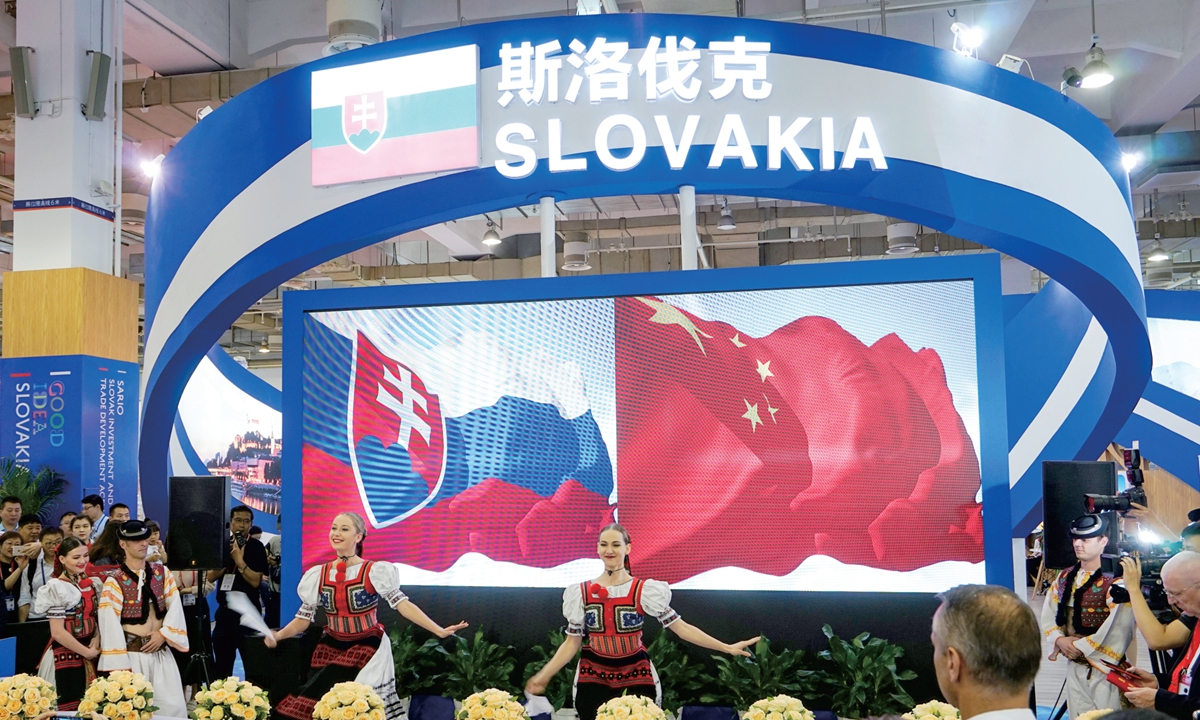
The opening ceremony at the Slovak Pavilion at the first China-CEEC Expo in 2019 Photo: Courtesy of the publicity department of Ningbo
China plans to import more than $170 billion worth of goods from CEECs in the next five years, according to media reports in February.
China's trade with CEECs exceeded $100 billion for the first time in 2020, with an average growth since 2012 reaching 8 percent each year, data from the MOFCOM showed.
Meanwhile, investment cooperation between China and CEECs continued to expand despite the global pandemic.
By the end of 2020, Chinese cumulative foreign direct investment in CEEC sectors including energy, infrastructure and logistics totaled $3.14 billion, while those countries' cumulative investments in China reached $1.72 billion, according to the MOFCOM.
Bilateral trade between China and the CEE nations surged by 50.2 percent on a yearly basis to $30.13 billion in the first quarter of 2021, with Poland, the Czech Republic and Hungary remaining China's top three trading partners in the region, data from the MOFCOM and the General Administration of Customs showed.
Following a successful step
The expo is the first major trade and economic fair themed around CEECs following the summit of China and CEECs in February. It is also the first offline expo after a successful expo in 2019.
In June 2019, the first China-CEEC Expo & International Consumer Goods Fair was successfully held in Ningbo. Delegates from Slovakia, Croatia and other CEECs participated in the expo.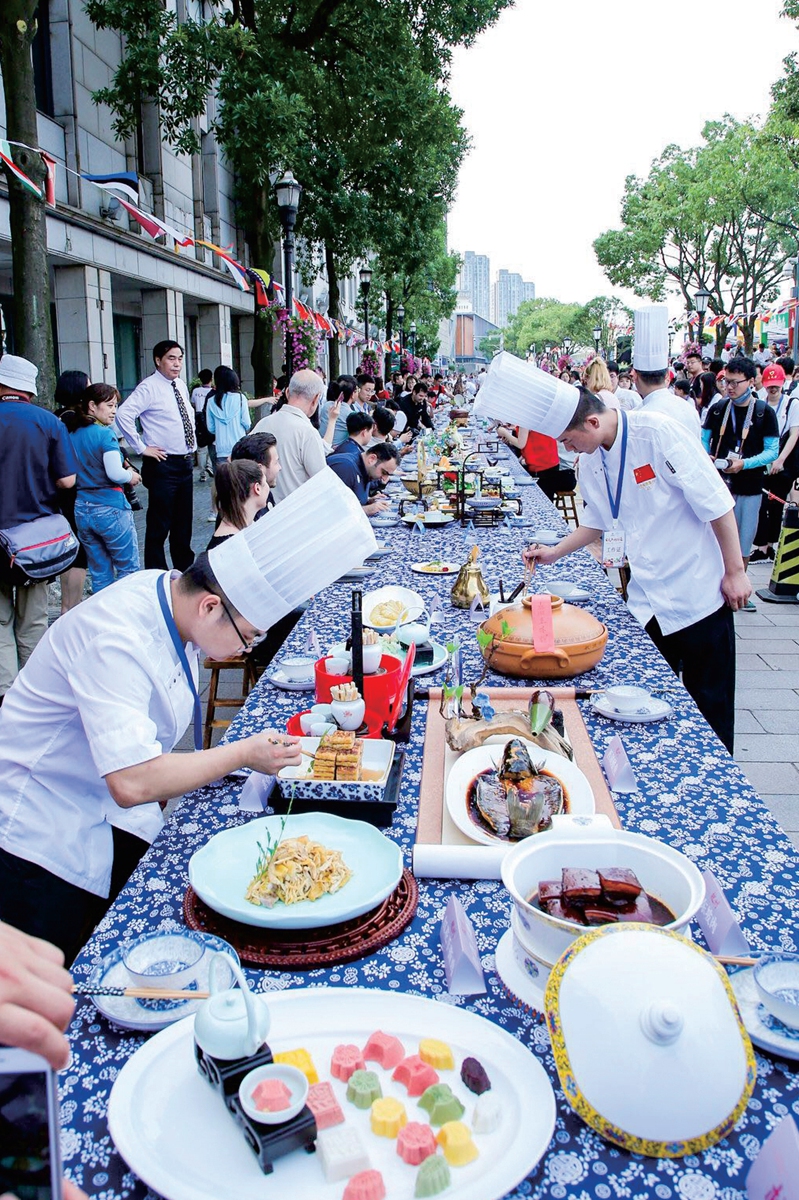
Chefs prepare food at "a taste of Zhejiang and CEECs," a major cultural exchange event, in Laowaitan, Ningbo on June 9, 2019. Photo: Courtesy of the publicity department of Ningbo
A total of 525 enterprises from CEECs, Germany, Russia and other countries participated in the exhibition, attracting 4,412 buyers from all over the country. Deals on hundreds of investment and cooperation projects were inked during the event.
At the 2019 event, 68 two-way investment projects were signed with a total investment of $19.4 billion, according to the Xinhua News Agency. The projects mainly came from 21 countries and regions including Indonesia, Singapore, Germany, Japan, the UK and the US, covering intelligent manufacturing, auto parts, equipment manufacturing, digital economy, mining, health care and other sectors.
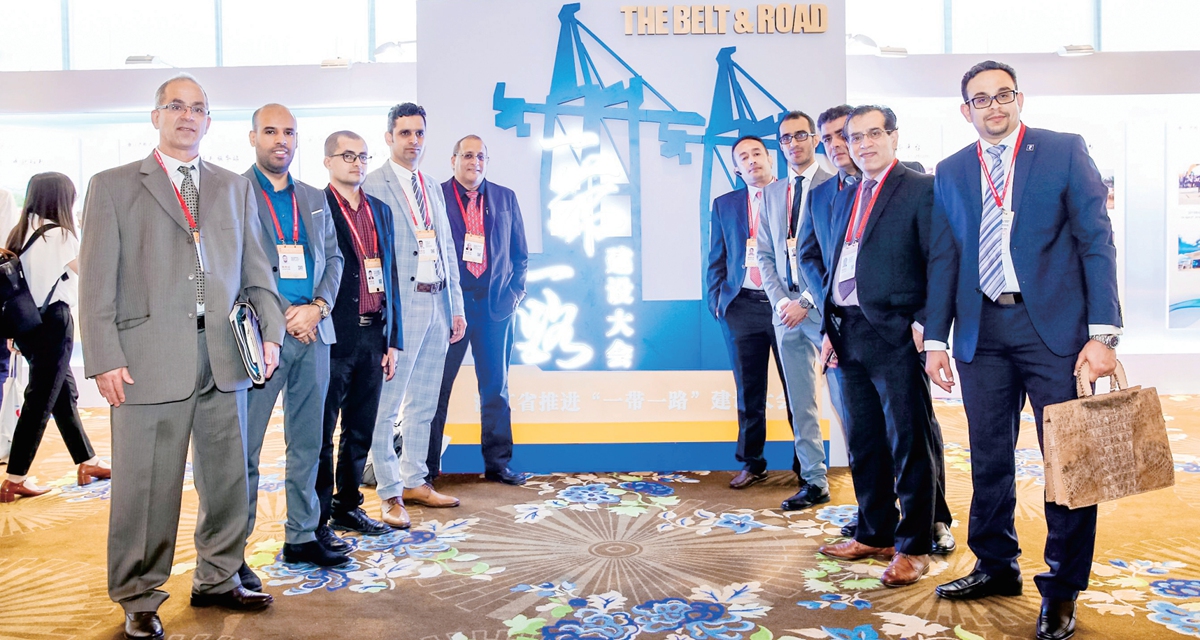
Guests from different countries attend the Zhejiang Belt and Road Development Promotion Conference in 2019. Photo: Courtesy of the publicity department of Ningbo
Ningbo, home to the world's largest port, facilitated 30 billion yuan worth of trade with CEECs. The city also has involved in $560 million worth of investment to CEECs, accounting for over 5 percent of the country's total.
In the first four months of 2021, the city's trade with CEECs totaled 11.96 billion yuan, growing 48.8 percent from the same period in 2020. Imports surged by 241.2 percent year-on-year while exports grew by 27.9 percent.
Ningbo Zhoushan Port, which has formed a preliminary cooperation mechanism with ports across CEECs, handled 600,000 containers in 2020. 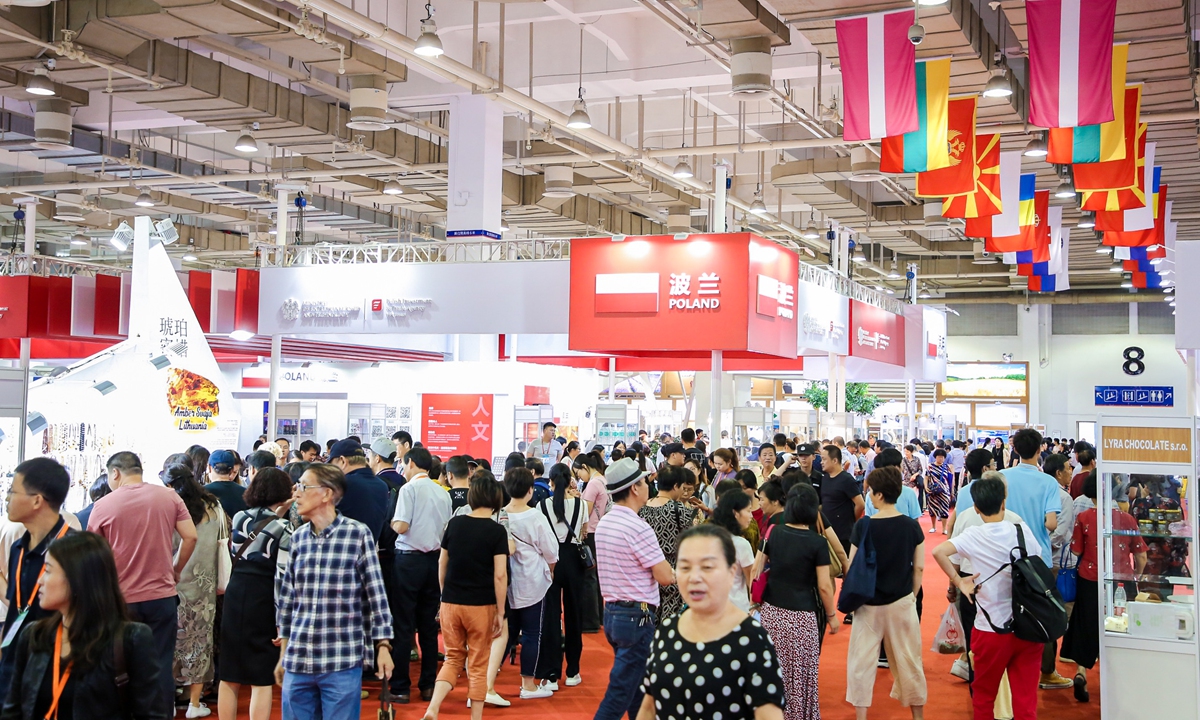
Visitors at the first China-CEEC Expo in 2019 Photo: Courtesy of the publicity department of Ningbo

